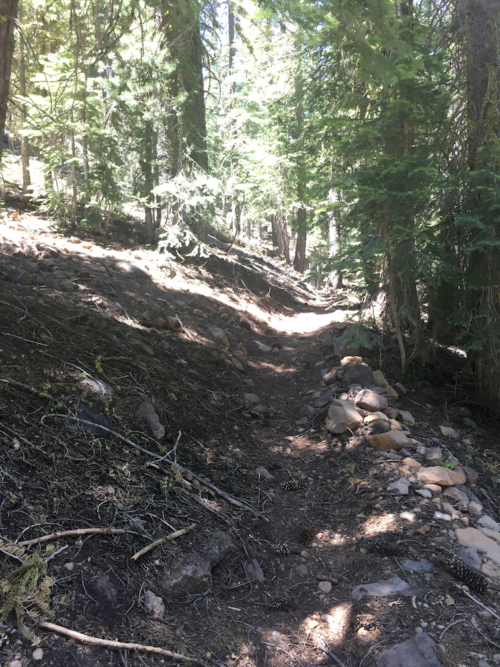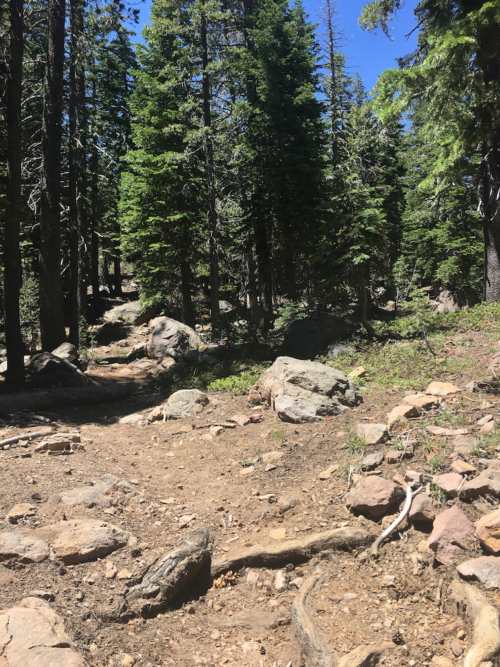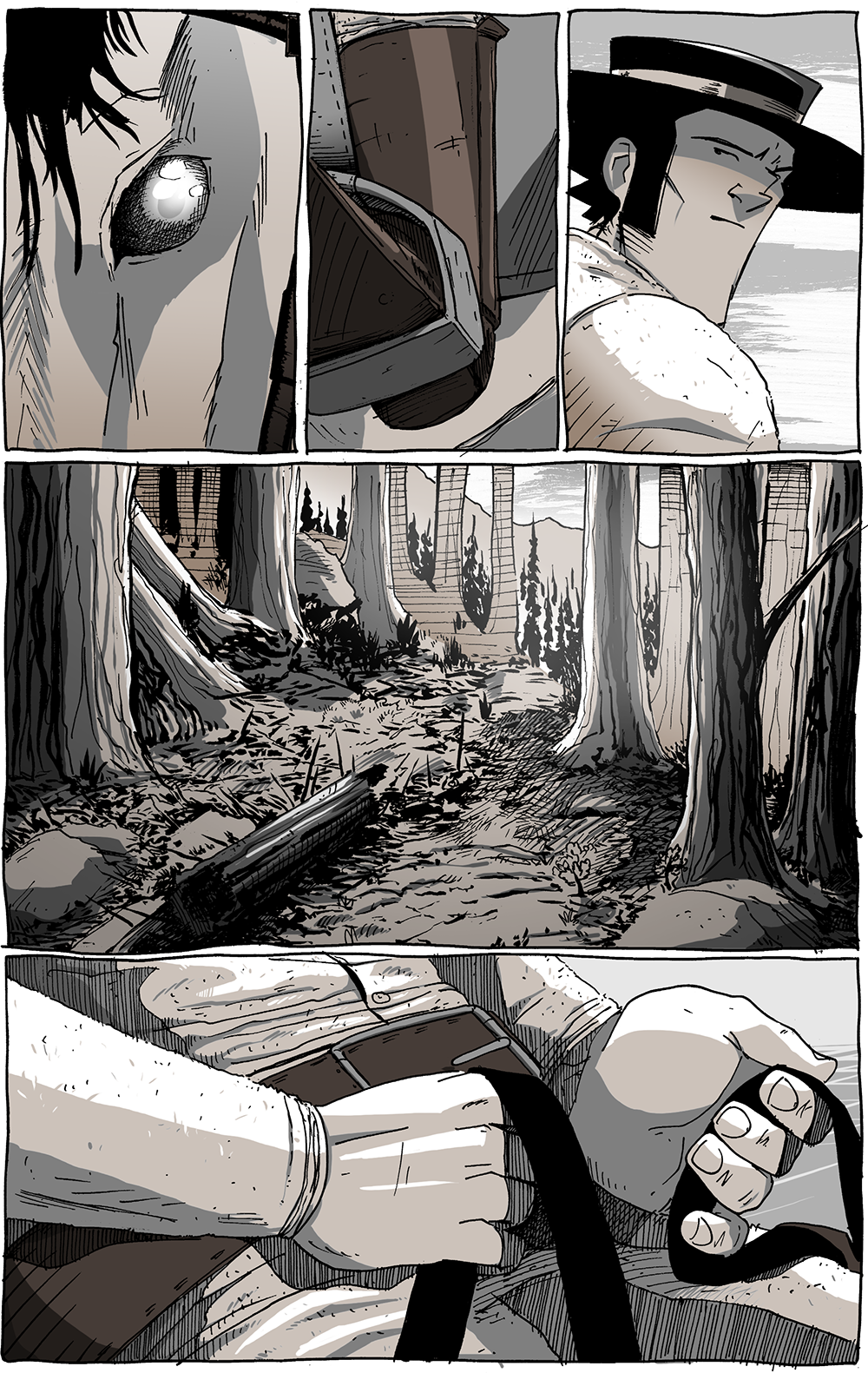At first I was a little upset that this page and the previous page were separated by the weekend. Together they make up a diptych of sorts––at the very least, they constitute an entire scene––and were always viewed as being the equivalent of a musical movement, inseparable and necessary to each other. In fact, in the print version, together they form a two-page spread acting as an interlude. Such thinking illustrates the different process that goes in to creating versus reading. When making the chapter, I had to think of them together to get the book done, but now, with hindsight and a little bit of distance, they work great separated like they have been by the update schedule.
If anything, the previous page acts as a nice coda on the opening scene of the chapter and this acts as a perfect opening note for the next scene. A common way to look at creative works is to look at them as peep holes into the minds of their makers. That surely is one way to look at it, but making is not the same action as consuming (in this case, reading). How a book is made is not required knowledge to be able to read and enjoy it. That’s why many of us think novelists are graced by the muse and spit out perfect prose by candlelight in a fugue state when, in reality, it’s much more slow-moving, aggravating, and purposeful than that (in most cases).

One photo from a trip to Lassen National Park that I used as reference for the middle panel.
This page marks the second part of the collaboration with Josh Tobey and, in this case, it was much more collaborative than the previous one. While Josh ended up inking about two-thirds of the last page, our division of content was much more managed on this one; as can be easily deduced, I inked the top and bottom rows of panels while he did the middle one. As inspiring as the previous page was for me, this page really taught me a lot about inking, particularly with a brush (I wrote about my hesitation with that particular tool earlier in this chapter).
Because so much of the remaining chapter takes place outside, watching Josh ink these pages––getting close and seeing how the brush worked on the page––helped to alleviate my fears over my ability to make it look not bad. I still lack the attention to organic variety that Josh has––made clear he says that rendering organic environments is “totally his thing”––but I learned how to use the brush as something other than just a soft pen. The shapes a brush can make when you push into the bristles or manipulate it on the page––it becomes more than just lines, it adds a new dimension of shape and texture that the Micron pens I use just don’t have. Luckily, I contribute my lack of variety less to a lack of ability and more to a lack of practice. It’s not a matter of can’t; it’s more a matter of haven’t yet.

Another photo from the Lassen trip that was referenced for this page.
What this showed me was that art is much more about impression than duplication. Often on hikes with my wife, I’ve looked over a landscape and said, “I have no idea how to draw this,” meaning that the eye sees so much nuance and variation that seemed––based on the tools and tricks I’ve gained over years of drawing––impossible to draw or so complicated to the point that I wouldn’t want to draw it. But you can capture a lot with a smear of ink, a splash of white out, a dab of ink-soaked toilet paper (really!). Comic art, specifically, is much more impressionistic than I realized and, because of that, seems a bit less insurmountable than it used to. I look at my knowledge and my tools and my ideas now and say, “Hell, I think I can do this,” which is a far cry from where I was when I started not only this chapter, but when I started Long John, or when I started drawing comics in 2007.
Needless to say, the pages that follow this are some of the most confident pages I’ve ever drawn simply because I finally felt like I had more than just one or two tricks in my pocket and, in a sense



Discussion ¬